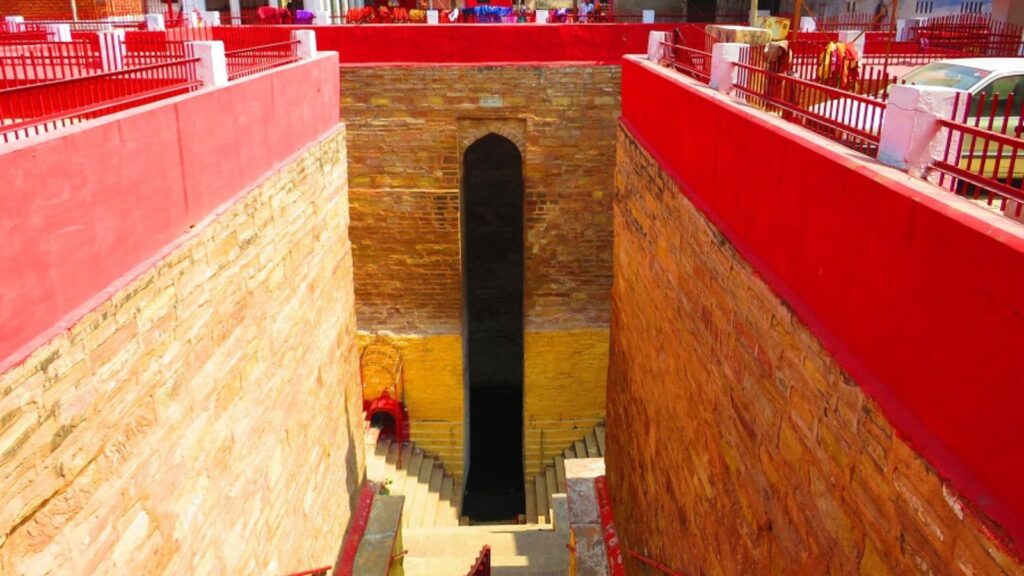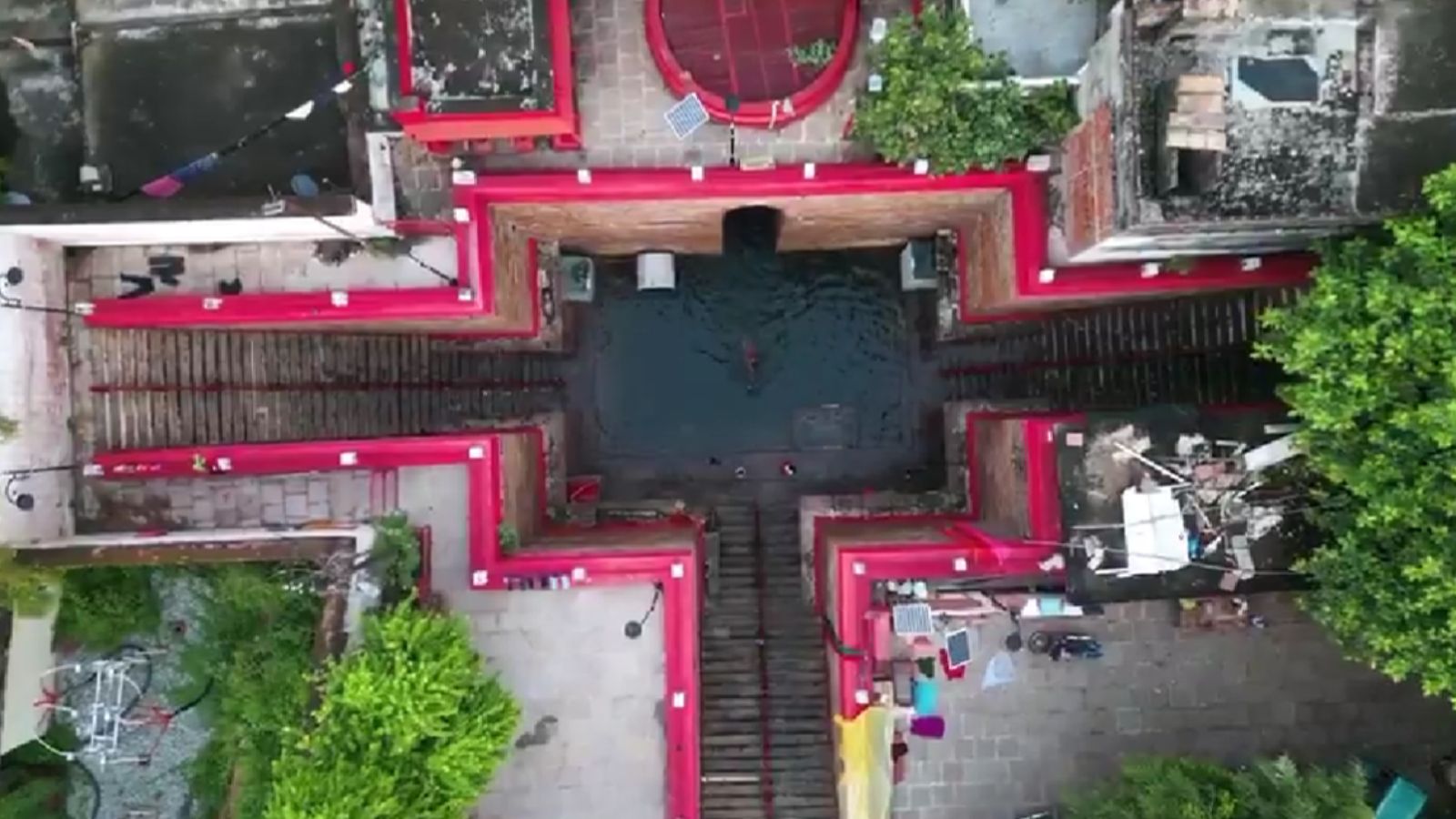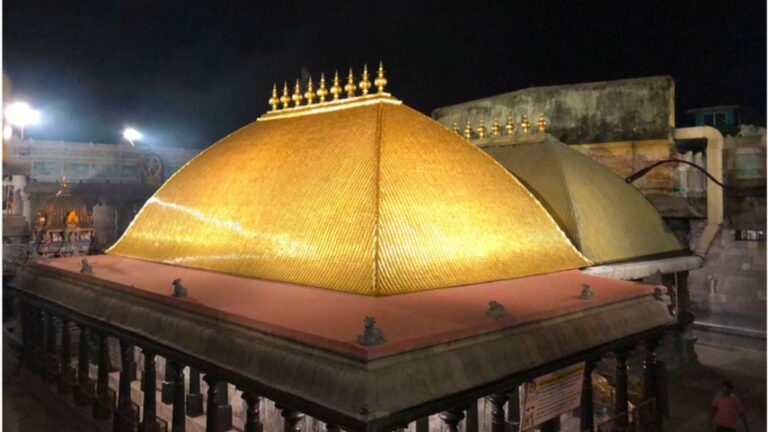Lolark Kund, near Tulsi Ghat in Varanasi, is one of the city’s most ancient and revered stepwells. It is deeply tied to fertility rites and solar worship. The name Lolark means “Trembling Sun,” a reference to the shimmering reflection of sunlight on its waters, seen as the divine radiance of Surya, the Sun God.
According to the Kashi Khanda of the Skanda Purana, Lord Shiva sent Surya to Kashi to bestow vitality and purity upon the land, and Lolark became one of the twelve Adityas (solar shrines) of the city. The site’s antiquity is believed to predate 1000 CE, with the present masonry structure often linked to the Gahadavala dynasty (1089–1197 CE), which was known for their patronage of temples and sacred tanks.
The kund is rectangular, measuring about 23 by 15 meters, with steep flights of steps descending on three sides and a distinctive arched retaining wall to the east, aligned with the rising sun. Its most important festival is Lolark Shasthi, observed on the sixth day of the bright half of Bhadrapada (August–September). On this day, thousands of childless couples bathe at sunrise, leaving behind clothes and a fruit or vegetable as an offering to Surya, vowing to renounce that item thereafter. The ritual is believed to confer fertility and cure ailments such as leprosy and skin diseases.

Beside the kund stands the Lolarkeshwar Mahadev Temple, which adds to the sanctity of the site. Though water in the kund has diminished in modern times due to urbanization and groundwater depletion, Lolark Kund is a living symbol of faith, blending architectural heritage with enduring spiritual traditions in Varanasi’s sacred landscape.
Check an aerial view of Lolark Kund: https://x.com/cleanganganmcg/status/1859046504469852247
Nearby Places of Interest
- Tulsi Ghat (150 m): Named after Tulsidas, who composed the Ramcharitmanas here. Known for wrestling akhadas and evening satsangs.
- Assi Ghat (400 m): Where the Ganga meets the Assi River. Famous for sunrise rituals, Ganga aarti, and a lively café scene.
- Tulsi Manas Mandir (350 m): Marble temple with Ramcharitmanas verses inscribed on its walls. A cultural hub linked to Tulsidas.
- Sankat Mochan Hanuman Temple (500 m): Established by Tulsidas, this shrine to Hanuman is believed to protect devotees from troubles.
- Durga Kund & Mandir (450 m): An 18th-century red temple dedicated to Goddess Durga, with a sacred tank central to Navratri rituals.
Pic and Twitter Aerial View Shot Courtesy: Namami Gange



